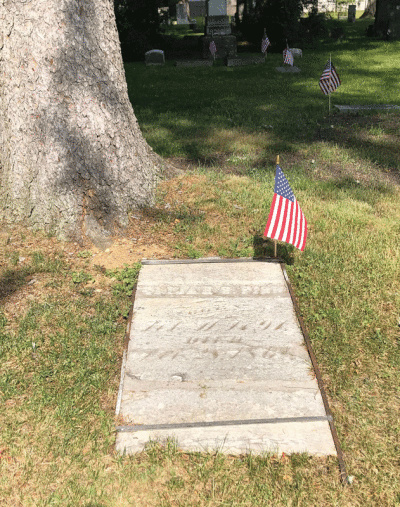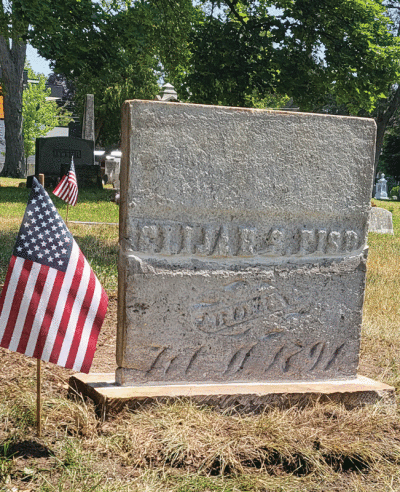
Abolitionist Elijah Fish’s grave maker before the restoration
Photo provided by the Birmingham Museum
BIRMINGHAM — The Birmingham Museum has dedicated much time and effort toward honoring Birmingham’s ties to the Underground Railroad.
In 2022, the gravesites of abolitionist Elijah Fish and freedom seeker George Taylor were added to the National Underground Railroad Network to Freedom. This designation required thorough research by the museum’s staff and volunteers. Since receiving this designation, the museum celebrated Juneteenth by highlighting Fish, and George and Eliza Tayor on a banner at City Hall.
Their most recent efforts include restoring Fish’s grave marker and placing the Taylors’ marker at Greenwood Cemetery.
The restoration of Fish’s grave marker has been completed, and the Taylors’ grave marker will be placed soon.
The Birmingham Museum chose Carter’s Cemetery Preservation to help restore the grave marker. Owner David Carter explained the process it took to complete this restoration.
The Fish marker was previously repaired many years ago, but it was broken into four pieces with a metal frame around it, and was laying on the ground.
“So it was exposed to all the elements with the rain, the trees and the sprinkler system that was there,” Carter said. “It just did an enormous amount of deterioration on the stone.”
Carter said they were about to save two parts of the stone when they found the original base that was buried about 2 feet underground.
“It was so sugared. It would just break off in your hands,” Carter said.
Carter explained that “sugaring” occurs in marble when water gets in between the cracks and softens the stone. Once this process starts, it continues to deteriorate the stone. Since marble is so porous, it absorbs a lot of water over time.
Museum Specialist Donna Casaceli said the stone felt almost like a sponge.
The total cost of the preservation of Fish’s stone was paid for by the Fish family. The museum reached out to the Fish family through ancestry.com, and they generously offered to cover the cost of the project. Since the funds were provided by a private donor rather than a fundraiser, the process turned out to be much quicker than expected.
The portion of Fish’s grave marker that had to be removed is now at the museum. However, it is not on display. If someone wishes to see the marker, they can call ahead and ask for it to be brought out of the museum’s archives.
“We really need to make sure that all the moisture is completely removed from the marble because it had been sitting around for years, soaking up moisture, getting rained on and deteriorating, so it is not viewable at this time,” Casaceli said.
While the stone may be featured in a future exhibit, they must make sure all of the moisture is out of it. Once it is fully dry, they can put it in storage and plan what they would like to do with it.
“The first step now is just to get it stabilized so that it’s not deteriorating any further,” Casaceli said.
As for the Taylors’ marker, it has been approved and sent off to the cutters. They are just waiting for the foundation to be poured, but this step is weather-dependent. The ground must be dry enough to pour the bases. Once the cemetery gets enough of a break from rain — and it reaches their turn in line — they will be able to finish this process.
The public can view these graves through the museum’s free Android and Apple tour app. Four tours of Greenwood Cemetery are now available on the app. Tour pamphlets can also be found at the museum.
 Publication select ▼
Publication select ▼























